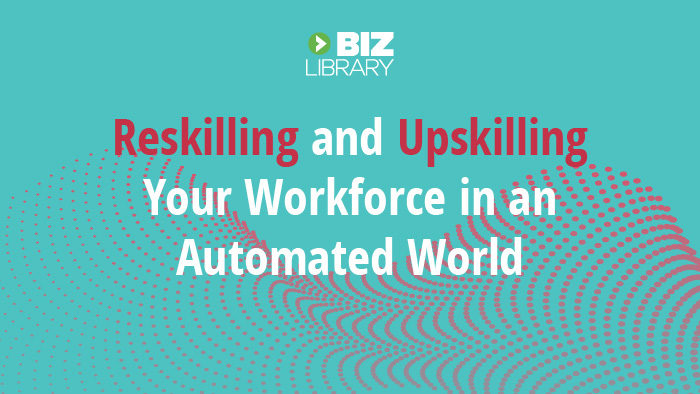By Alexandra Brunjes
The manufacturing industry has faced numerous challenges in recent years, but one of the most pressing (and enduring) is a persistent skills gap. As the Baby Boomer generation shifts into retirement, manufacturing companies stand to lose approximately 25% of their workforce. Combine this with an increasing need for industry modernization, and all signs point toward needing to recruit, train, and retain new manufacturing talent. Optimizing the onboarding process is an opportunity for the industry to address these challenges and prepare for the future.
Let’s discuss the importance of manufacturing onboarding, particularly as it relates to the skills gap and labor shortage, and the components of effective programs that get new workers up to speed and integrated into the organizational culture.
Why Is Onboarding Important in Manufacturing?
Deloitte and The Manufacturing Institute’s 2021 report estimates that the manufacturing skills gap will leave 2.1 million jobs unfilled by 2030. As the industry faces a wave of hiring, onboarding is an opportunity to provide new workers with critical skills, educate them about the industry, and lay the groundwork for upskilling and reskilling. In the following sections, we’ll briefly look at how effective onboarding can address the two big drivers behind this skills gap: demographic shifts associated with the retirement of experienced and highly skilled workers, and ongoing technological advances.
Addresses Demographics and Builds Skills
Baby boomers are retiring from manufacturing jobs more quickly than they are being replaced, so companies will soon have a large population of new workers, many of whom won’t have significant prior experience. This demographics-related “brain and skills” drain is nothing new, but it is a growing concern for manufacturers.
Effective onboarding can help kickstart knowledge acquisition and skill development for new employees. This strengthens the skills pipeline and accelerates the process of new hires to competency.
Introduces New Technologies & Improves Critical Thinking
As the manufacturing industry adapts to technological advances, manufacturing jobs increasingly require new skills – skills that new hires don’t always have. It may have been the case in the distant past that workers only needed a strong work ethic and basic understanding of manufacturing processes, but those days are fast disappearing.
At today’s increasingly-automated manufacturing sites, workers often need to have basic computer skills (such as Word, Excel, and email); be able to interface with Programmable Logic Controllers (PLCs) and troubleshoot software concerns; and work alongside robots and other aspects of advanced manufacturing. Likewise, there’s a much greater emphasis on problem-solving, critical thinking, teamwork, communication, and even lifelong learning/learn-to-learn skills that keep an ever-advancing manufacturing skill set sharp.
Onboarding is an opportunity to educate employees about these advances and lay the groundwork for technological proficiency, and with training content from BizLibrary, manufacturing workers can gain pertinent skills with engaging, self-paced online training courses.
What Are the Advantages of Successful Manufacturing Onboarding?
Onboarding sets the stage for a new hire’s career at a company. When done effectively, it improves employee engagement, job preparedness, and productivity – all of which are critical for addressing the manufacturing skills gap. Effective onboarding also improves new employee retention, which leads to major time and cost savings.
Developing the Employee-Organization Relationship
Onboarding helps new hires to prepare for their new role, meet their coworkers, and begin integrating into the company. Thoughtful, effective onboarding immediately makes employees feel valued and supported, which increases engagement and job satisfaction.
This is particularly important for industries that employ lone workers as it helps these employees feel more connected to their employer.
Correcting Common Misconceptions about Manufacturing
Many people, particularly those in younger generations, have incorrect or outdated perceptions of the manufacturing industry (ex: manufacturing jobs are dirty, non-skilled, non-rewarding, low-paying, and lead to “dead-end” careers).
Onboarding is an opportunity to address these misconceptions and to ensure that employees know about the wealth of career opportunities that manufacturing offers, particularly as new technologies are introduced. It’s a time to introduce new employees to the realities of modern manufacturing jobs: clean, rewarding, mentally challenging, high-paying roles with vast opportunities for career advancement.
Clearly outlining career paths helps new hires imagine a future in the industry and empowers them to work towards goals that move their careers forward.
Reducing Absenteeism & Increasing Retention
One of the big challenges that manufacturers face is employees who are not engaged at work, which leads to absenteeism, poor performance, and retention problems.
Effective onboarding can improve retention by helping new hires integrate into their roles and learn about manufacturing career paths – studies have shown onboarding can improve employee retention by 82%. Additionally, employees who experience effective onboarding are 30 times more likely to have high job satisfaction and 48 times more likely to feel supported by their organization, both of which contribute to retention.
Onboarding is especially important as the manufacturing industry works to attract and retain large numbers of Millennials and Gen Z employees, as these demographics increasingly search for roles with employer-provided training.
Introducing Organizational Values
You can also use your new employee onboarding to introduce new hires to your organization’s unique goals, mission, values, and culture. This is often done, in part, by including a discussion or video with the organization’s chief executive that welcomes newly hired employees and communicates a shared understanding of what the company is all about – what you do, how and why you do it, and how you relate with people both within and outside of the organization.
Kickstarting Skill Development
Of course, a core component of onboarding training is preparing new hires to help the organization reach its goals, which requires highly skilled workers. A well-designed onboarding program can be the jump-start new hires need to transition from eager novices to competent entry-level workers and, with time, to expertise. Additionally, onboarding training promotes well-rounded skill development and helps avoid knowledge gaps related to the simple chance of an individual employee’s on-the-job experiences.
If you are considering online skill-building options, BizLibrary’s range of solutions includes a content library full of manufacturing-specific content and an easy-to-use learning management system, packed with features that enable personalized skills development based on each employee’s role and current skill level.
Improving Workplace Safety
Effective onboarding can also improve safety and health at your worksite. Employees are more likely to have a lost-time injury during their first month of work, but proper onboarding can mitigate this risk. By providing early, effective guidance about health and safety best practices, manufacturing companies can prevent health and safety incidents, workplace accidents, property damage, and even near-misses. This can help limit injury-associated worker absenteeism and promote regulation compliance, workforce productivity, employee satisfaction, and morale.
Training Delivery Methods to Use in New Employee Onboarding
Manufacturing onboarding experiences can differ depending on the type of company and the job responsibilities of new hires, but typical programs include a mix of classroom learning, online training, hands-on exercises, and additional training delivery methods, such as videos, mentoring programs, or even virtual reality and augmented reality. This blended learning approach, or combination of different training methods, provides more effective learning outcomes than any one training method alone. Let’s briefly break down in-person and online training.
In-Person Training
In-person manufacturing onboarding should concentrate on two broad areas of focus: 1) company and role information, and 2) training and skills development.
Company and role information. During onboarding, provide employees a relevant overview of your company and how their role fits into it. This should include discussing pertinent workplace policies, key points of contact, and clear guidelines about expectations for workers. This is also a good time to provide new hires with career path insights and to describe potential role progression.
Onboarding is also an opportunity to answer questions and establish a communication feedback loop so that employees know how to ask questions and report concerns. One popular way to do this is by assigning workplace “buddies” or mentors who can provide advice and guidance. Another is by deploying an anonymous reporting system.
Training and skills development. In-person training and skills development is typically a mix of classroom instruction and hands-on learning.
Classroom instruction, which can occur virtually, is well-suited to widely sharing information such as company processes and procedures; company policies, missions, and values; and workplace hazards, safety controls, emergency signals, and emergency reporting procedures. This information can be communicated using presentations, live safety demonstrations, instructional videos, and more. It’s helpful to incorporate interactive activities into classroom instruction to keep workers engaged and encourage teamwork and collaboration.
Hands-on learning, the second component of in-person skills training, can include job shadowing, workplace walkthroughs, and introductions to materials and job tasks. For optimal worker engagement and memory, hands-on learning and classroom instruction should go hand-in-hand so that workers can immediately contextualize and apply their new knowledge.
Online Training
Online courses are an increasingly popular component of job training, including onboarding and new hire training, because they provide easily accessible, self-paced content that suits workers’ schedules and learning preferences. Although online courses should not replace hands-on training, they can be as effective or even more effective than classroom training.
When considering online training options for your workforce, ensure that content is developed by industry experts. Other helpful features include instructional design, including short course length, casual and conversational spoken audio, engaging visuals, interactive course components, and pre- and post-course knowledge assessments. These features facilitate worker engagement, retention, and skill development, and transfer to on-the-job performance.
But not investing in training can lead to diminished productivity and quality and increase safety issues and concerns. Getting leadership buy-in is difficult but can be made easier by proving the ROI of training programs.
How BizLibrary Can Help You Build Effective Onboarding Programs
BizLibrary’s solutions for manufacturing have all the tools you need for both online and in-person training administration and content delivery.
With content designed by workplace training experts, including technical subject matter experts and instructional designers, the courses in our library help manufacturing companies build more skilled, efficient, and productive workforces – both during onboarding and beyond.
You can deliver our content through your own LMS, or through BizLMS, which streamlines how you assign, deliver, and report on training content.
If you’re ready to up your training game and provide a personalized experience that upskills and engages employees at all levels, check out our platform overview page to learn about how our LMS’s upskilling features use pre-built job roles and skill paths and connect them to our content library, making it a breeze for you to give employees a development plan designed just for them, without putting in the long hours to create everything from scratch!
Improve Your Manufacturing Onboarding Program Today
As you develop your onboarding curriculum, remember that it isn’t a one-time, short-term event, but rather an important first step in each employee’s manufacturing career, and one that lays the groundwork for future learning. When designing your onboarding program, think about intermittent training that builds upon itself or even repeats itself (incorporating spaced learning for improved retention) over at least 90 days and most likely throughout an entire year.
Manufacturing onboarding is an opportunity to address challenges head-on – make the most of it.
About Alexandra Brunjes
Alexandra Brunjes is a Content Specialist at Vector Solutions, a provider of industry-focused solutions that connect information and technology. Alexandra has a B.S. in Neurobiology from Georgetown University in Washington, D.C. with minors in Creative Writing and French. She is a published journalist and experienced health and science writer. Her expertise includes risk intelligence, healthcare and neuroscience, and technology.


